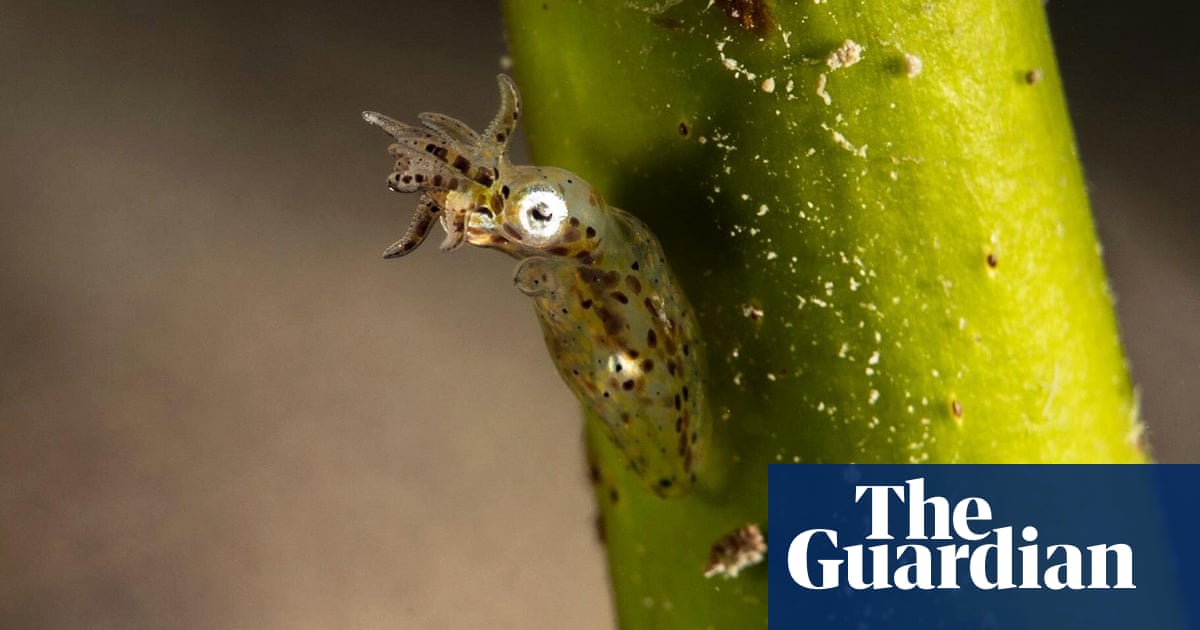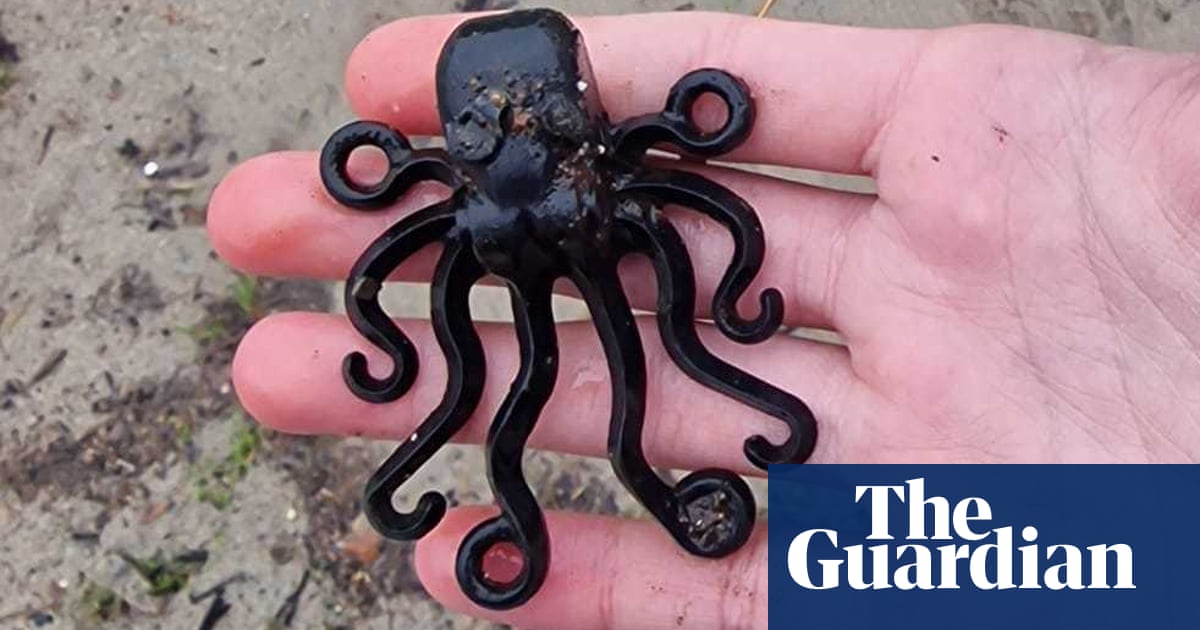Discovered in the deep: tiny ‘sucker-bum squid’ with martial arts moves | Environment


In Japan, stories have been told of forest-dwelling magical spirits called kodama since ancient times. Over the centuries, they’ve adopted many guises: sometimes they’re invisible, sometimes they look like trees. The Studio Ghibli animated movie Princess Mononoke portrayed kodama as rotund little humanoids with rotating bobble heads. Now, a genus of miniature squid has been named in honour of the kodama and their role as nature’s guardians.
“If you see them, it’s a sign that the ecosystem is healthy,” says Jeff Jolly from the Okinawa Institute of Science and Technology, referring to Kodama jujutsu, the pygmy squid that he and a team of scientists and underwater photographers found on coral reefs in Japan and described in a 2023 paper.
“They’re super tiny,” says Jolly, “the size of your pinky nail.” The squid are members of the Idiosepiidae family, which are the ocean’s smallest cephalopods and dwarfed by their cousins, the octopuses, squid and cuttlefish. The common name for the species in English is the Hannan’s pygmy squid after Brandon Ryan Hannan, a diver and photographer who helped to find and collect them. They’re not easy to spot, being incredibly small and nocturnal.
A second pygmy squid species, the Ryukyuan pygmy squid, Idiosepius kijimuna, was discovered in the seagrass meadows around the Ryukyu Islands of southern Japan, including Okinawa. This one was named after mischievous creatures from Okinawan mythology, the kijimunā, which live in banyan trees and are skilful fishers. These pygmy squid were already known about, but on closer inspection turned out to be a separate species.
Jolly and colleagues kept the two pygmy squid species in aquariums, where they proved to be a lot easier to keep alive compared with larger cephalopods. Octopuses are notoriously antisocial in captivity and tend to attack each other.
Watching the pygmy squid up close, the team observed behaviours that would have been difficult to follow in the wild. “They spend a lot of time just sitting around,” says Amanda Reid, a taxonomist at Australia’s Commonwealth Scientific and Industrial Research Organisation, who helped to identify the new species while she was working at the Australian Museum. She describes a sticky patch on their backs that glues them to blades of seagrass, which led a colleague to nickname them “sucker-bum squid”. Once stuck in place, the squid wait for shrimp to drift within grabbing range.
Jolly saw Hannan’s pygmy squid hunting shrimp much larger than them, which inspired him to give them their species-specific name, jujutsu, after the martial art. “The principle of jujutsu is that a small person can attack a larger person,” he says. “You corral and wrestle them and control their back, which is what the squid do.”
The pygmy squid have been spawning in captivity. Each species performs a distinct and intricate courtship ritual, either face to face or with the male below and behind the female. “They buzz like bees as they’re doing it,” says Jolly.
Jolly has successfully reared two generations of Hannan’s pygmy squid, which he thinks is a first for this squid family. When they hatch, the young are large, relatively speaking, and can hunt for shrimp immediately. They only live for two or three months.
The two new species bring the total number of known pygmy squid to eight, which live in different parts of the Pacific Ocean. “I think there’s likely to be more species to be described. There’s a few from northern Australia that I’m pretty sure are new species, so we’ll see,” says Reid. “It’s not the end of the story, as far as these little critters are concerned.”
Source link




